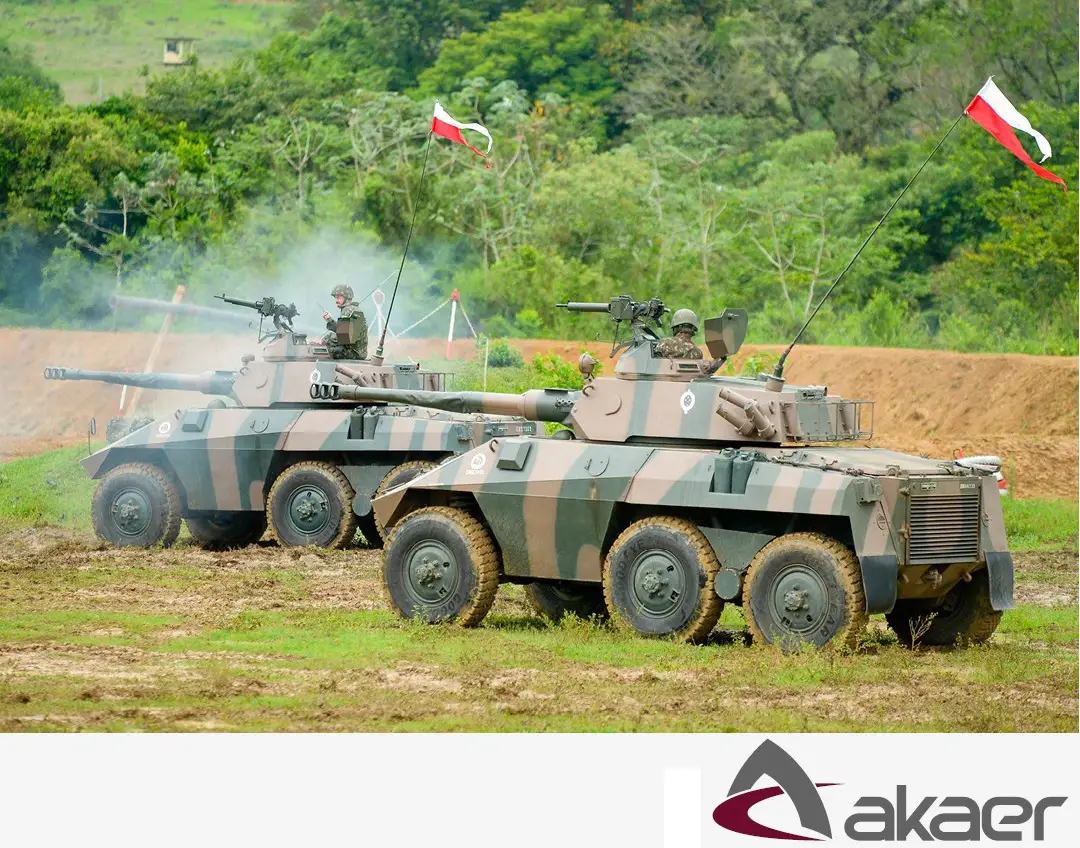The Brazilian Army has recently completed the modernization of nine ENGESA EE-9 Cascavel M VII 6×6 armoured reconnaissance vehicles, marking a significant milestone in Brazil’s military capabilities. The contract for this modernization project was signed on July 7, 2022, with Consórcio Força Terrestre, a consortium comprising local companies. The total value of the contract amounts to BRL 74.6 million (USD 14.2 million), as confirmed by Tales Eduardo Areco Villela, Director of the Manufacturing Directorate General. The consortium, consisting of Akaer Engenharia, Opto Tecnologia Optrônica, and Universal – Importação, Exportação e Comércio, has been entrusted with the development of two prototypes and seven pilot batch vehicles. The initiative is set to commence in the third quarter of 2022, with the first prototype scheduled for delivery to the Brazilian Army in the third quarter of 2023, as stated by a spokesperson from Akaer Engenharia.
The modernized Cascavel armoured reconnaissance vehicle introduces a range of improvements, enhancing its firepower, situational awareness, command-and-control capabilities, and mobility. The first prototype, developed by Akaer Engenharia, primarily focuses on incorporating new powertrain components. Subsequent upgrades, including advanced optronics and a formidable anti-tank missile capability, are expected to be unveiled in December and July 2024, respectively. To evaluate the vehicle’s performance, Akaer will deliver a prototype to the Army Evaluations Center (CAEx) in January 2024. The partnership between the Brazilian Army’s manufacturing directorate and Consórcio Força Terrestre, facilitated by a contract worth BRL 74.6 million (USD 15.2 million), has paved the way for the realization of this ambitious project. Additionally, the Brazilian Army Strategic Program “Armoured Forces” (Prg EE FBld) aims to modernize a total of 98 Cascavel vehicles by 2031, with the potential for an additional 103 vehicles to undergo modernization pending funding.

Significant enhancements have been made at the War Arsenal of São Paulo (AGSP), where the modernized Cascavel received various upgrades. These include a powerful 225 hp MWM Acteon 6.12 TCE diesel engine, a 6+1 Allison 3000 Series automatic transmission, a twin missile launch system capable of deploying Rafael’s Spike LR2 anti-tank missiles, state-of-the-art optronics integrated with digital displays for the driver, commander, and gunner, and an electric turret drive and elevation system. In addition to these upgrades, the Communications and Electronic Warfare Command of the Brazilian Army will supply a new command-and-control suite, while the AGSP will undertake the refurbishment of the 90 mm cannon, further bolstering the capabilities of the modernized Cascavel armoured reconnaissance vehicle. This comprehensive modernization initiative signifies Brazil’s commitment to enhancing its military strength and readiness in the face of evolving security challenges.
The EE-9 Cascavel (Rattlesnake) is a six-wheeled Brazilian armoured car developed primarily for reconnaissance. It was engineered by Engesa in 1970 as a replacement for Brazil’s ageing fleet of M8 Greyhounds. The vehicle was first fitted with the Greyhound’s 37mm main gun, and subsequently, a French turret adopted from the Panhard AML-90. Later models carry unique Engesa turrets with a Belgian 90mm Cockerill Mk.3 cannon produced under licence as the EC-90. The Cascavel shares many components with the EE-11 Urutu, its armoured personnel carrier counterpart; both entered production in 1974 and are now operated by over 20 nations in South America, Africa, and the Middle East. Rights to the design were also sold to the United States via the FMC Corporation. About 2,767 Cascavels and Urutus were manufactured before Engesa ceased operations in 1993.















